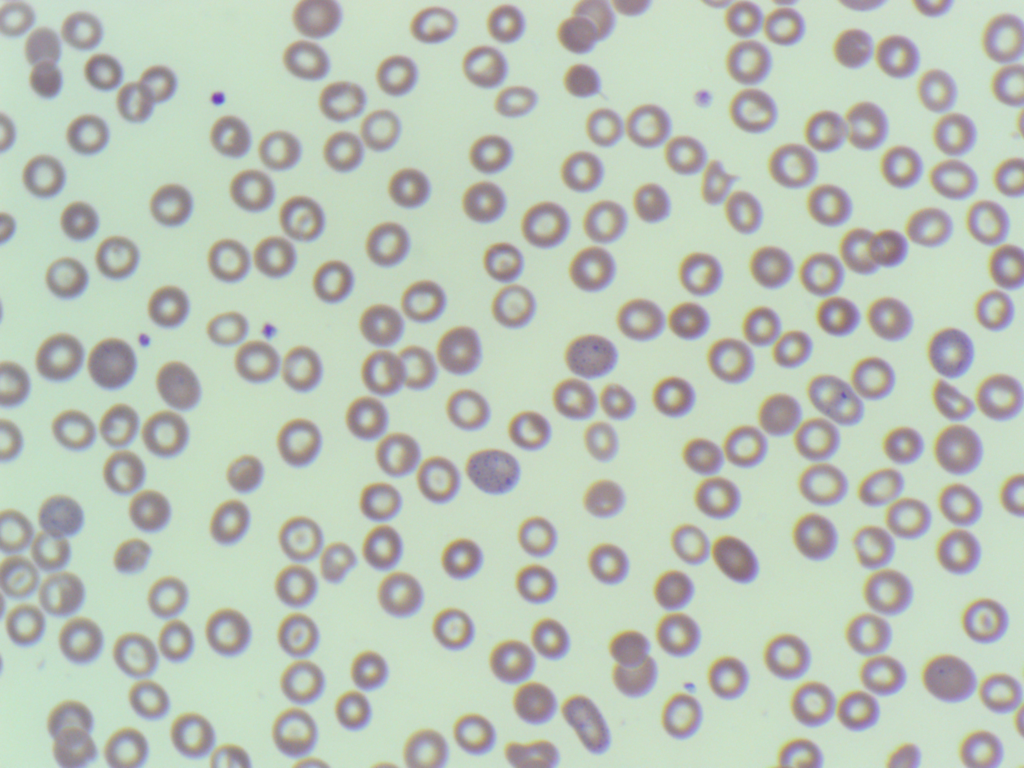Red cells: Basophilic stippling


Basophilic stippling refers to the presence of evenly distributed inclusions within the erythrocytes. They are formed from aggregates of ribosomes and degenerating mitochondria. They mainly consist of RNA. In basophilic stippling the granules are evenly distributed throughout the cell which helps to differentiate them from other inclusions such as Howell-Jolly Bodies (single, circular inclusion) and pappenheimer bodies (small cluster at the periphery of the cell). They are seen a range of different conditions:
- β-thalassaemia minor
- Thalassaemia major
- Haemolytic anaemia
- Sideroblastic anaemia
- Liver disease
- Heavy metal poisoning (lead, arsenic, zinc, silver, mercury)
- Deficiency of pyrimidine 5-nucleotidase
_____
Image from personal photography.
Privacy Policy | Refund & Return Policy | Only Cells LTD © 2025
